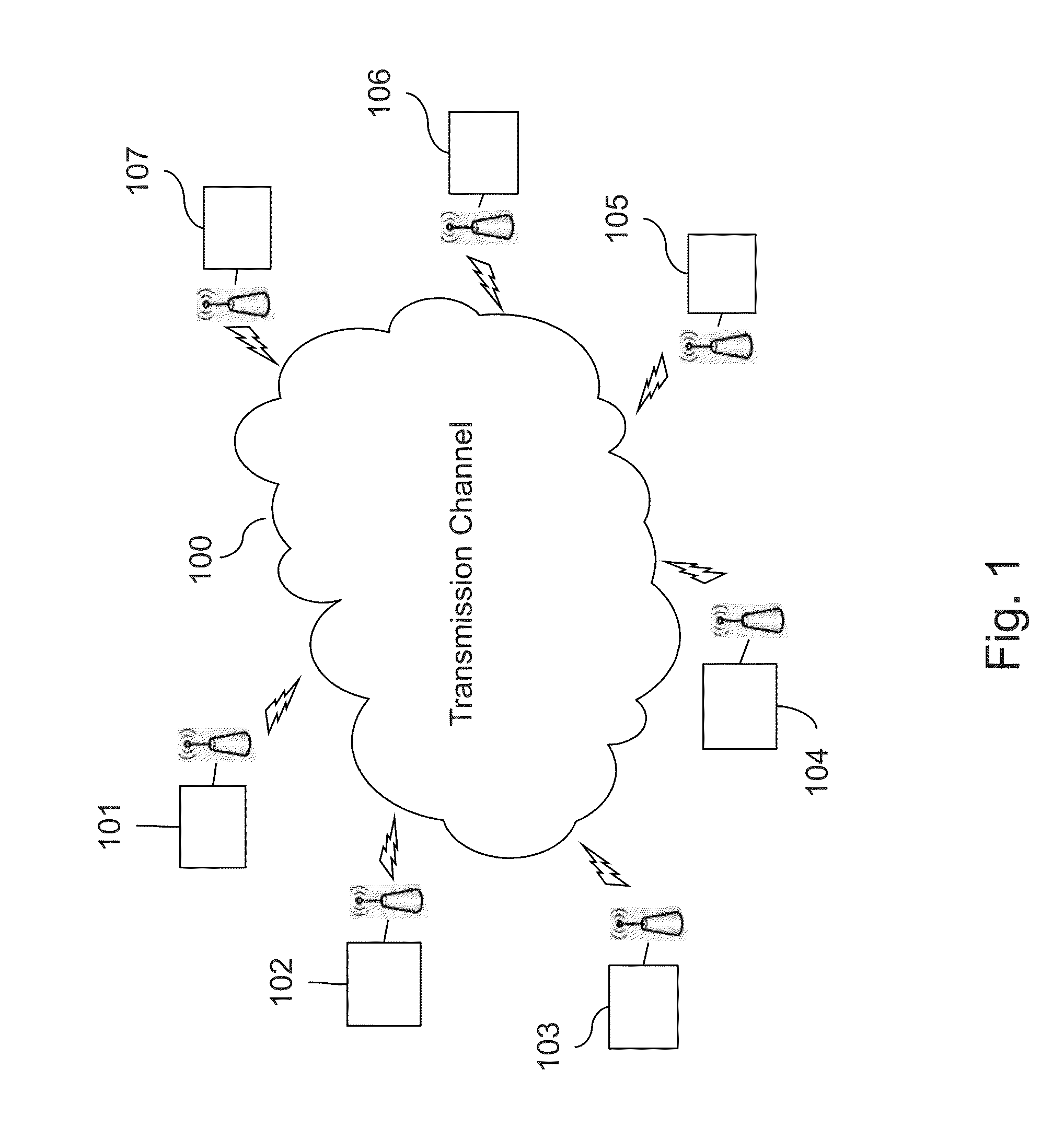Method and device for data communication in a communication network
a communication network and data communication technology, applied in the field of communication networks, can solve the problems of waste of network bandwidth, particularly detrimental to latency, and inability to apply independent acknowledgment policies to each individual data frame, and achieve the effect of efficiently conveying information and low cos
- Summary
- Abstract
- Description
- Claims
- Application Information
AI Technical Summary
Benefits of technology
Problems solved by technology
Method used
Image
Examples
Embodiment Construction
[0086]A goal of the invention is to provide a frame-based acknowledgment strategy in case frames are acknowledged by block. In particular, the invention seeks to provide a distinct acknowledgment policy for data packets or frames that are sent in a burst from the same transmission buffer or queue (TX FIFO).
[0087]This is because in known systems, in particular in IEEE 802.11 networks, acknowledgment of all the frames in the burst is usually requested no matter some of these frames do not require acknowledgment. In other words, acknowledgment policies inextricably and individually associated with each frame appear to be lost for some of the frames.
[0088]By making it possible to shift acknowledgment requirement to only a subpart of the considered frames of the burst, preferably to only the frames requiring acknowledgment according to their own acknowledgment policies, the present invention reduces bandwidth waste, reduces head-of-line blocking phenomenon, and thus reduces latency.
[0089...
PUM
 Login to View More
Login to View More Abstract
Description
Claims
Application Information
 Login to View More
Login to View More - R&D
- Intellectual Property
- Life Sciences
- Materials
- Tech Scout
- Unparalleled Data Quality
- Higher Quality Content
- 60% Fewer Hallucinations
Browse by: Latest US Patents, China's latest patents, Technical Efficacy Thesaurus, Application Domain, Technology Topic, Popular Technical Reports.
© 2025 PatSnap. All rights reserved.Legal|Privacy policy|Modern Slavery Act Transparency Statement|Sitemap|About US| Contact US: help@patsnap.com



